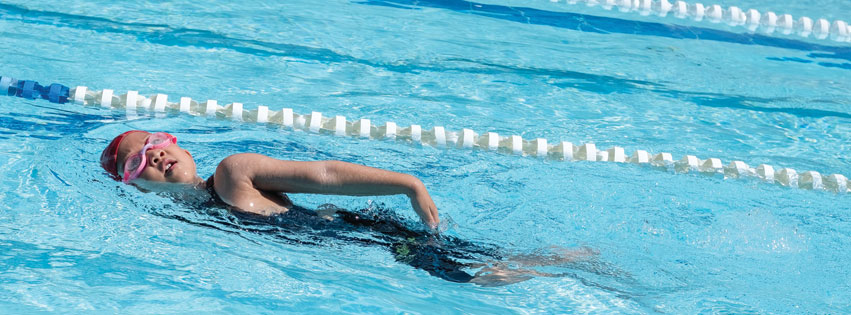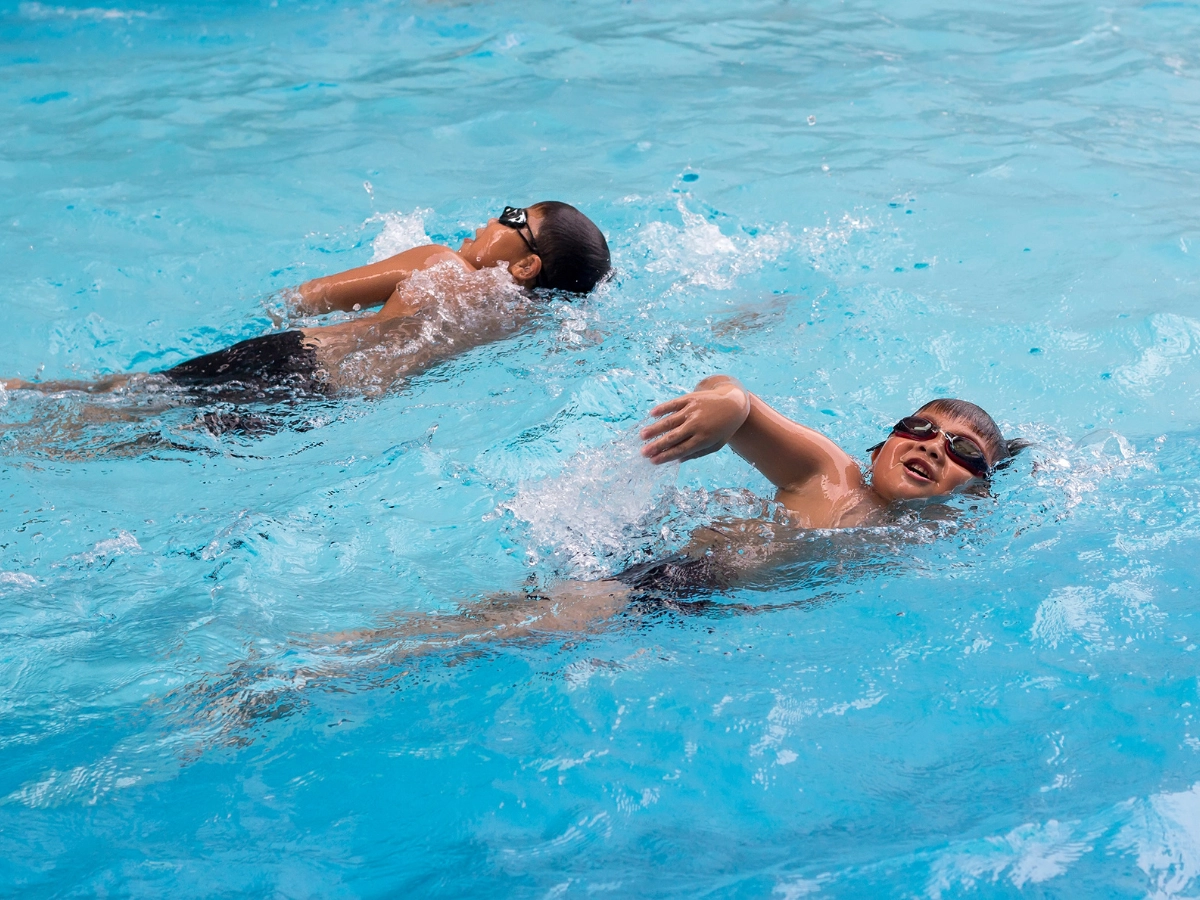Competitive swimming places intense demands on a swimmer’s shoulders because it requires:
- Both strength and extreme flexibility to achieve the range of motion needed for fast, efficient forward movement.
- Forward movement through a dense medium that provides both friction and resistance (i.e., water).
- Constant repetition with full arm rotations — the move that presents the greatest risk of injuring the shoulder.
Swimming is one of the rare sports that requires a competitor to use their arms and shoulders as a means of propulsion. Rowing comes to mind as another such rare sport. Even in rowing, the arms are moving through the air, not pushing against the resistance of the water. Furthermore, research has found that competitive swimmers, on average, perform 30,000 shoulder rotations every week.
In short, you’d be hard pressed to find a sport that demands more from its athletes’ arms and shoulders. The result is that swimmer’s shoulder is a common injury. In addition to competitive swimming, the three top contributing causes to swimmer’s shoulder are:
- Bad technique
- Overtraining
- Imbalanced strength and flexibility training
Swim strokes and bad technique that contribute to swimmer’s shoulder
Swimmer’s shoulder is most commonly associated with the freestyle stroke, although it can occur when an athlete is training in the butterfly and backstroke as well. Regardless of swim stroke, swimming with poor posture and spinal alignment puts extra strain on the arms and shoulders to move the body forward.
When training students on the freestyle stroke, make sure they aren’t using a “thumb first” entry into the water with their hands. A thumbs-first entry reflects a rotation in the arm that’s putting undue stress on the shoulders. Training your swimmers to have a soft-elbow recovery will keep their hands loose, flat entry into the water. It will also minimize excessive sideways movements that impact the shoulders.
Taking a unilateral breathing approach can also contribute to swimmer’s shoulder, as it can cause the swimmer to develop a one-sided stroke. Instead, training your swimmers to use bilateral breathing will help keep their movements more balanced.
Correct technique is so critical because the shoulder can bear the high repetitions of arm strokes when the swimmer is moving correctly. Repeating bad mechanics and technique 30,000 times a week is what causes the worst wear-and-tear on the shoulder ligaments, tendons, and muscles.
Overtraining and training tools that can cause swimmer’s shoulder
While repeating bad technique will undoubtedly cause injury, overtraining – even with proper technique – can do so as well.
Overuse of the shoulder joint will cause some natural wear-and-tear. If you aren’t providing swimmers with sufficient rest or deviation from exercises using the same fundamental motions, the shoulders and arms are getting overused. The overuse, in turn, causes fatigue, which starts to impact technique and destabilizes the shoulder, creating a vicious cycle that can lead to muscle strain, tendonitis, and weakening the ligaments. All of which cause pain and increase the risk of more severe shoulder injury.
Some overtraining can occur if training duration and intensity spikes. Instead, swimmers should develop their training endurance at a steady rate so training intensity can increase at a pace their bodies can handle.
Overuse or misuse of swimming paddles will also put a strain on the shoulders. When your swimmers are going to use swimming paddles, make sure they aren’t too large. If the swimmer has to spread their fingers unnaturally wide to use the full paddle, it’s too big.
Imbalance in strength and flexibility training increase the risk of swimmer’s shoulder
Swimmers require both strength and flexibility. It also requires balanced strength development. For example, the freestyle stroke will strengthen the shoulder’s internal rotator and chest muscles. So out-of-the-pool strength training needs to balance this movement with strength training on the shoulders’ external rotators and shoulder blades.
As for the balance between strength and flexibility — great strength will force the body forward. If the shoulders aren’t sufficiently flexible and provide a good range of motion, the swimmer could suffer strained or torn ligaments or tendons. If they have a hyper-flexibility in their shoulders (and many of the best swimmers will), swimmers can injure themselves during strength training!
Always design strength and flexibility programs for your swimmers that focus on creating and maintaining the balance they need.
Swimmer’s shoulder can be prevented
It may seem like suffering from some swimmer’s shoulder is inevitable for any competitive swimmer. Don’t confuse shoulder fatigue and recovery with the injury of swimmer’s shoulder. You should expect your swimmers to experience shoulder fatigue and have a plan for how you can switch up in and out of the pool training, so they recover in a way that protects their shoulder’s health.















